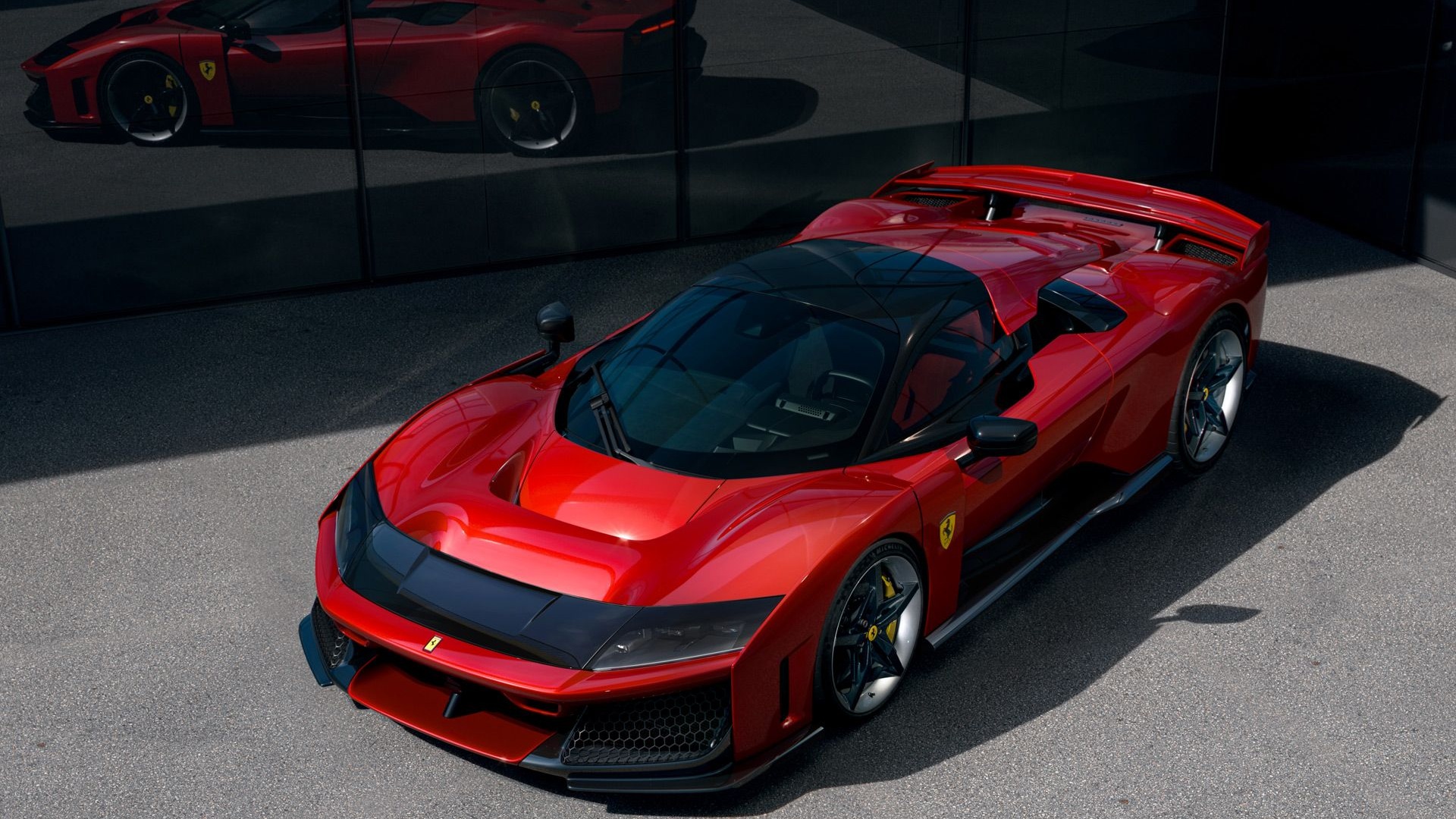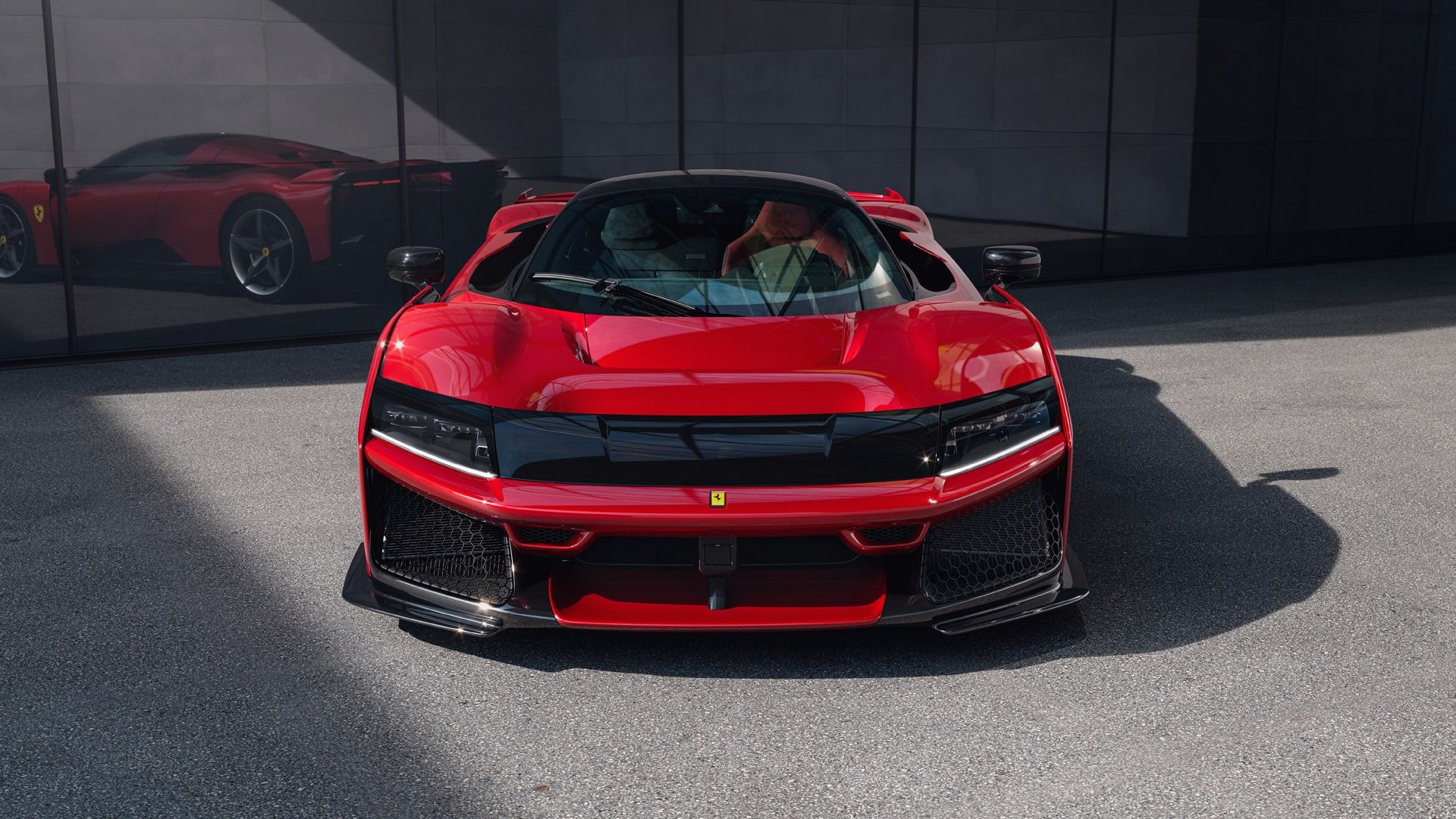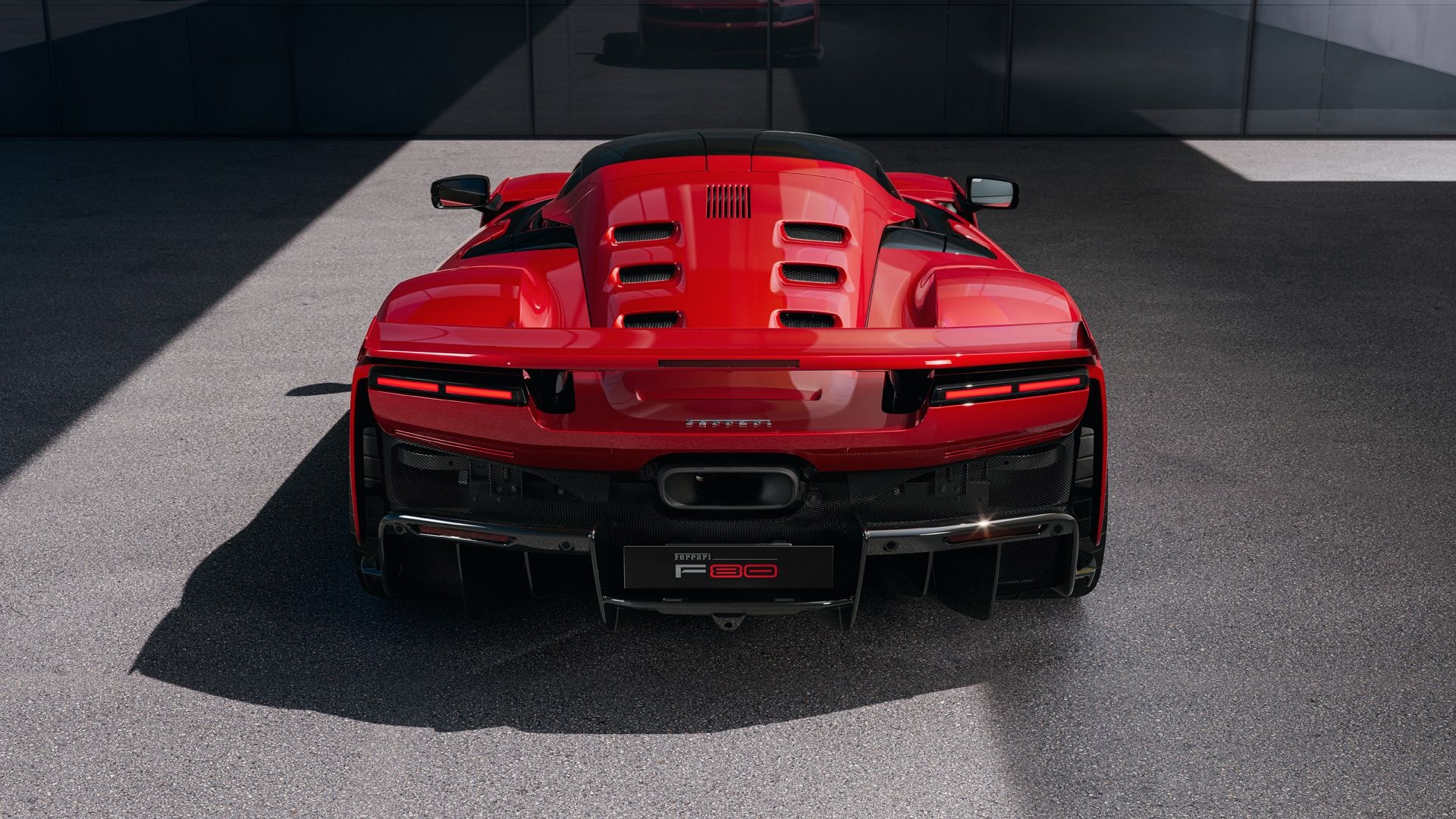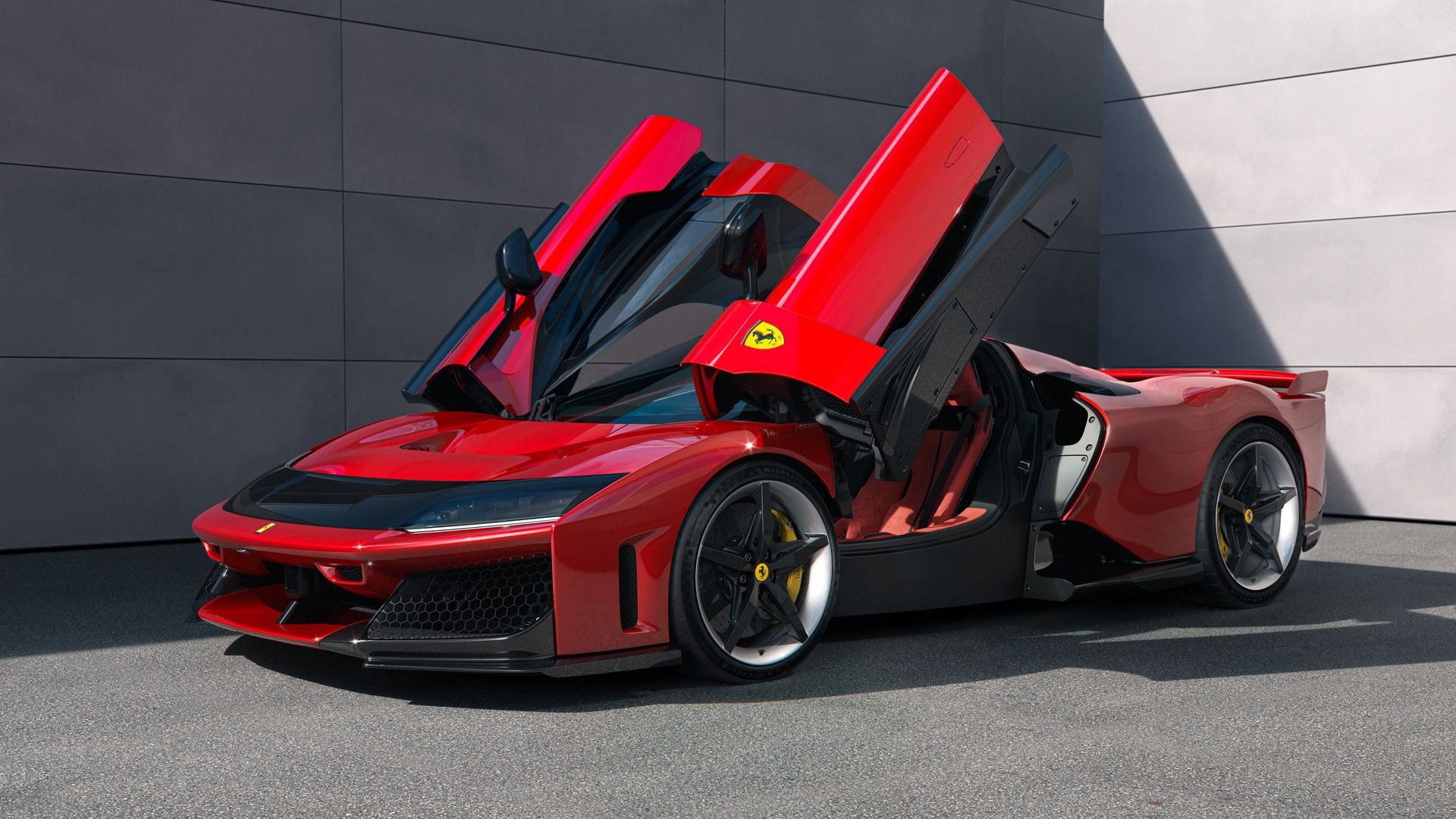- Ferrari has revealed successor to the LaFerrari
- Peak power of 1,184 hp generated from twin-turbocharged V-6 and trio of electric motors
- Production limited to 799 units
- Pricing starts at $3.9 million
Ferrari on Thursday revealed the F80 hypercar, the long-awaited successor to the LaFerrari.
The car is the latest member in Ferrari's Special Series, which in addition to the LaFerrari includes the 288 GTO, F40, F50, and Enzo, and it's the first to be equipped with a V-6 engine.
The mid-mounted V-6, which forms part of a hybrid system and is connected to an 8-speed dual-clutch automatic transmission, is a newly developed unit derived from the V-6 in Ferrari's Le Mans-winning 499P LMH, and matching the race car's 3.0-liter displacement. It also features a twin-turbocharging system, where each of the turbos are aided by an electric compressor designed to provide boost pressure before sufficient exhaust gases take over, just like in Formula 1.The electric compressors are also able to recover energy from those exhaust gases.
The V-6 spins to 9,200 rpm and delivers a peak 888 hp on its own. However, it works together with three electric motors, two at the front axle, and one at the rear. The two front motors make 140 hp each while the rear motor makes 80 hp and also recovers energy under braking. The all-wheel-drive configuration is similar to what Ferrari used for the SF90 Stradale, and just like that car, the rear motor helps provide torque fill for the engine.
The combined output of the powertrain is 1,184 hp, which is the highest output of any Ferrari road car to date, and will enable the F80 to deliver true hypercar performance. Ferrari quotes a 0-62 mph time of 2.15 seconds, a 0-124 mph time of 5.75 seconds, and a top speed of 217 mph. The automaker also quotes a dry weight of 3,362 pounds.
Like the LaFerrari, carbon fiber is used for the car's central monocoque structure, as well as the body. For the F80, the central tub was made as narrow as possible to reduce drag and weight. This has also resulted in a cabin that Ferrari says has a single-seater feel, especially since the driver's seat is separated from the passenger seat by a rising center console, a bit like in the Chevrolet Corvette. The driver's seat is also mounted slightly forward of the passenger's seat.
The F80 also boasts a new steering wheel developed specifically for this car. It's slightly smaller than the steering wheel in the LaFerrari, and features a flat top and bottom. Physical buttons have also returned to right and left hand spokes, replacing the full-digital layout used by Ferrari in recent years.
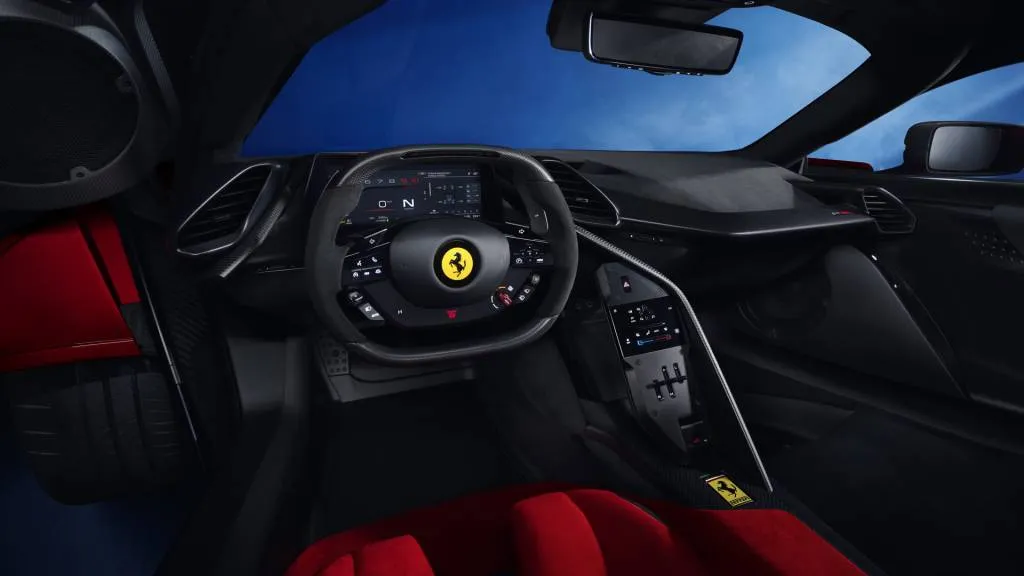
Ferrari F80
For the exterior, Ferrari has adopted a muscular shape that clearly takes inspiration from the F40, especially when viewed from the rear three quarter angle. Aerodynamic and cooling requirements played a major role in shaping the car, with Ferrari quoting more than 2,200 pounds of downforce at a speed of 155 mph. Also helping with downforce is an active suspension system, which contributes to generating ground effect. The suspension was developed with Multimatic and features active inboard dampers and upper wishbones formed using 3D printing.
The F80 will be limited to 799 units worldwide, and all build slots have already been snapped up by the loyal customers provided with the opportunity to purchase one. The price for one is $3.9 million. As was the case with the LaFerrari, which was limited to 499 units, there will likely be an additional run of an open-top version at some point.
Like the recently revealed McLaren W1 that replaced the P1, the F80 is also a successor to one of the cars forming the original hypercar holy trinity from a decade ago. Still missing is a new hypercar from Porsche to replace the 918 Spyder. The folks at Stuttgart have previewed a potential electric hypercar with last year's Mission X concept, though a production announcement still hasn't been made.
